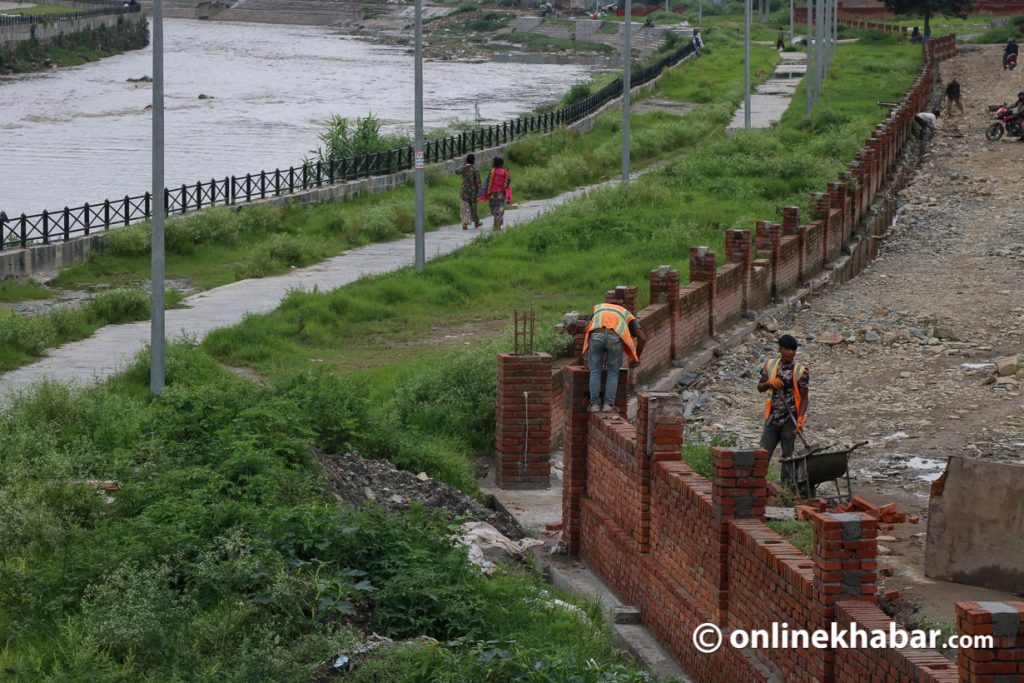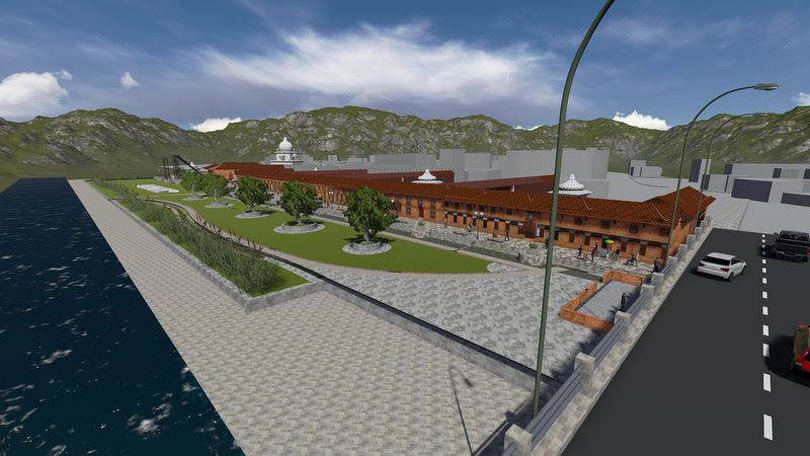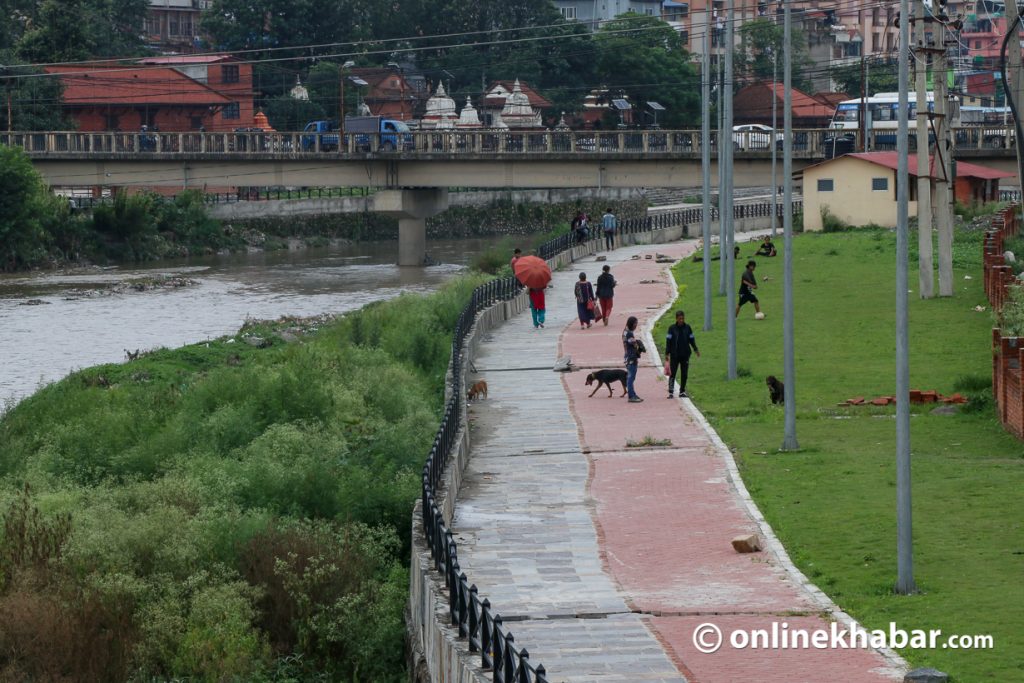As soon as Jeevan Ram Shrestha assumed his office as the minister for culture, tourism and civil aviation recently, he made his first decision to “move ahead with the construction of the Hanumandhoka-Swayambhu heritage trail.”
But, it was not a new plan as hyped.
Heritage activists have been demanding the government build a heritage trail connecting various inner cities of Kathmandu and tourist destinations that would increase touristic activities in the local area. However, even though the issue has been included in various programmes, policies and plans of the Kathmandu metropolitan city, and provincial and federal governments, the work has not been integrated into the master plan.
Proposed plan
According to the master plan made by the city government two years ago, the Hanumandhoka-Swayambhu heritage trail will be 2.2km long.
About two dozen important heritage sites including Kasthamandap, Maru Ganesh, Maru Hiti, Santaneshwar Mahadev, Marubahi, Micha Galli, Banja Hiti, Saa (Oil Mill), Chasan, Damai Tole, Sunta Galli, Pachhai Galli, Nardevi Dyachhen, Naradevi Ayurvedic Hospital, Burankhel, Myechyon Hiti, Tapyanta, Ranjit Mall Satah Ghat, Bhelu Mahadev, Dallu Chautara, Nipu Hiti (Bhimsen Temple), Dhime Lho, Chaara Hiti and Bhuinkhel will be connected by the trail.
According to the plan, the authorities would put up identification boards in respective heritage sites along the heritage trail, remodel the heritage sites in the old way, put up exhibitions that reflect the local lifestyle and reconstruct the roads, water spouts, phalchas and sattals (resting places) in their original forms.
However, no one took the initiative to work according to the master plan. Instead, different authorities held their own separate projects rampantly. Not only Hanumandhoka and Swayambhu, but there was also a plan to connect the tourist area of Thamel with the heritage areas including Handigaun and Pashupatinath. And, they all affected the plan even more.
Meanwhile, the road construction that had started ashore the Bagmati river as per the plan too has been left stranded. It has not come into use even though it was supposed to connect Kathmandu via footpath and cycle lanes. The government is indifferent to its management too.
Budget of millions still unused

Minister Shrestha’s announcement has made heritage activists happy, but the government’s attitude towards the work still has not garnered the needed trust. Heritage activist Ganapati Lal Shrestha says, “There is still doubt if the government would take the historic and heritage aspects of the said area into consideration or not while constructing the heritage trail.”
The trail started being constructed in 2015 with the assistance of the Asian Development Bank (ADB). It is not yet completed, but the roads have already become unmanaged and dilapidated. According to the High-Powered Committee for Integrated Development of the Bagmati Civilisation (HPCIDBC), the work of the Bagmati heritage trail is 70 per cent complete so far.
The construction of a 14.2km heritage trail connecting 28 historical temples would be done in two phases. To date, only 11 of the temples have been made in three packages, informs Engineer Kamal Aryal of HPCIDBC. For each of the packages, Rs 350 million has been spent on the construction of 28 sattals. Kathmandu and Lalitpur metropolitan cities are spending Rs 1.5 billion on the construction of the Bagmati heritage trail.
Along the route, work is underway to build seven disabled-friendly toilets, a two-metre sidewalk and a two-metre cycle lane. Aryal says that there are plans to lay a stone path, make a garden and keep lights.
He says the sattals and temples being built along the river corridor will be handed over to the metropolitan city by mid-July. But, the work has not started on the city government’s side because the temple of Brihaspati Baba near the Thapathali bridge has not been removed.
The two metropolitan cities have coordinated projects and the Department of Archeology has lent its technical assistance. However, the route has not been completed and, hence, has not come into use.
The department’s Director-General Damodar Gautam says the department has no role in the current work. “There are many heritage sites of archaeological importance along the route, which will remain under our protection. We took the responsibility only of the designs of the sites,” he says.
Stating that the work of the Hanumandhoka-Swayambhu heritage trail should be completed soon, he shares there would be many benefits in the future if the plan can connect the heritage sites of the core city too.
“The decision to build the heritage route is important in terms of cultural tourism; we welcome it as an implementing unit,” he says, adding, “Other state bodies, especially the local governments, should play a role in accomplishing this and take ownership.”
According to him, surveys will be conducted to identify the main routes and auxiliary routes now. It will start by finding the heritage sites including temples, hitis, choks and phalchas that lie along the route between Kasthamandap and Swamyambhu. “The department will pay special attention to the issue of historical and archaeological importance, but the rest of the infrastructure including toilets and bicycle lanes should be looked after by other state bodies.”
Optimistic yet sceptic

Heritage activists say the two world heritage sites should be declared a no-vehicle zone and should be free for tourists can walk freely along the heritage trail. According to Ganapati Lal Shrestha, a road has been proposed connecting Hanuman Dhoka to Swayambhu via Maru-Dhokatole-Naradevi-Bhurungkhel.
“The inner-city routes can also be connected to this main route as there are ancient streets and squares. Tourists should be able to realise this and walk. Currently, the tourists who reach Hanumandhoka or Basantapur go to Swayambhu by vehicle; we need to change their perspective.”
He also predicts that the tourists will stay for a long time only after the heritage trail is completed. He argues that it will also help trade in the inner city. “The inner routes should be studied further and used more creatively. There are a lot of possibilities for tourists to roam around the inner city with the help of heritage police”
Hopeful, Shrestha says, “Previously, the work went against the cause of heritage conservation in Swayambhu. But, Minister Jeevan Ram may have decided on the heritage trail not for popularity but for real work. Let’s see how it goes through.”
This story was translated from the original Nepali version and edited for clarity and length.



























